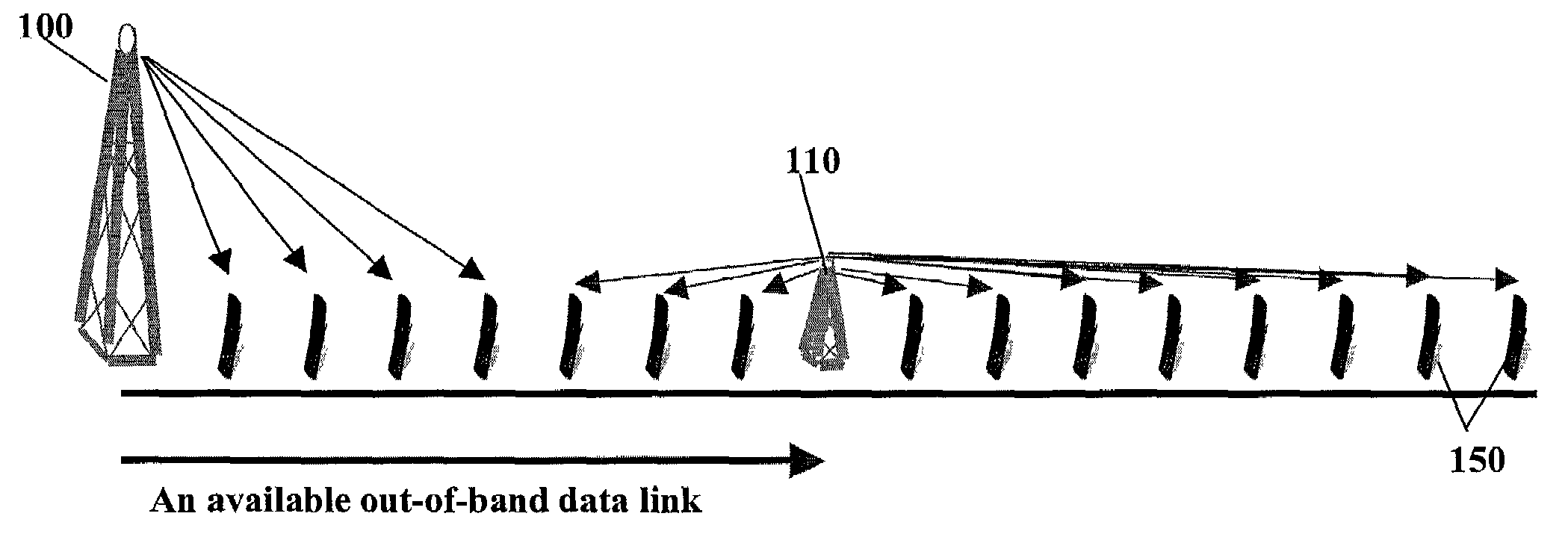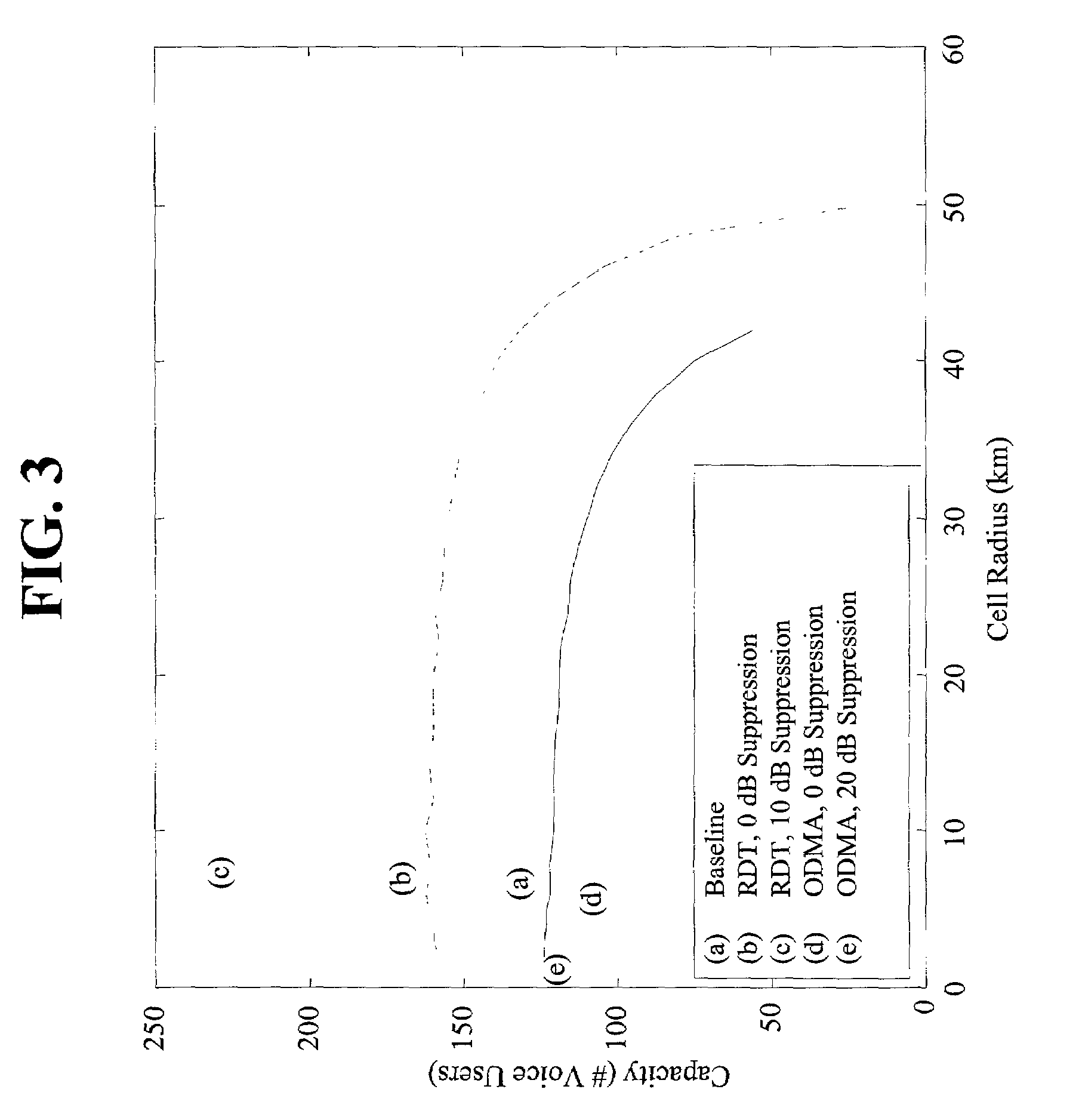Method and system for a remote downlink transmitter for increasing the capacity and downlink capability of a multiple access interference limited spread-spectrum wireless network
a wireless network and remote downlink technology, applied in the field of wireless networks and communication systems, can solve the problems of reducing the capacity of the spread-spectrum wireless network, reducing the capacity of the network, so as to increase the maximum data throughput supported, reduce network costs, and improve the effect of coverage area
- Summary
- Abstract
- Description
- Claims
- Application Information
AI Technical Summary
Benefits of technology
Problems solved by technology
Method used
Image
Examples
Embodiment Construction
[0055]Through analysis and simulations disclosed herein, it will be shown that the practical capacity of a spread-spectrum based wireless network, such as a wide-band code division multiple access (W-CDMA) network, with nominal system parameters, is nearly a constant per cell rather than a constant per coverage area. More specifically stated, the maximum combined data throughput is set by the combined effect of transmission power limits and individual user signal to interference plus noise ratio (SINR) limits and is, in fact, insensitive to the size of the cell for cell sizes typical of urban implementations (cell radius between 0.5 km and 3.0 km). Thus, according to an embodiment of the present invention, it is determined that a micro-cellular architecture over the same area as a macro-cellular architecture will lead to a higher practical capacity for the network. Furthermore, the improvements may be independently awarded to the uplink or reverse link (the reception of mobile-to-ba...
PUM
 Login to View More
Login to View More Abstract
Description
Claims
Application Information
 Login to View More
Login to View More - R&D
- Intellectual Property
- Life Sciences
- Materials
- Tech Scout
- Unparalleled Data Quality
- Higher Quality Content
- 60% Fewer Hallucinations
Browse by: Latest US Patents, China's latest patents, Technical Efficacy Thesaurus, Application Domain, Technology Topic, Popular Technical Reports.
© 2025 PatSnap. All rights reserved.Legal|Privacy policy|Modern Slavery Act Transparency Statement|Sitemap|About US| Contact US: help@patsnap.com



